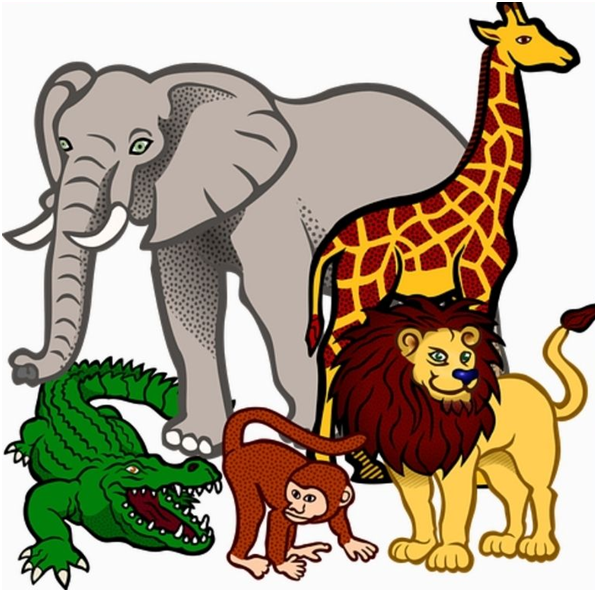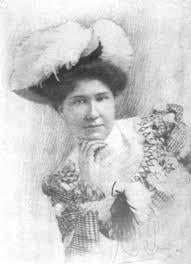- Books Name
- First Flight and Foot prints
- Publication
- ACERISE INDIA
- Course
- CBSE Class 10
- Subject
- English
Poem-4
How to Tell Wild Animals
By Carolyn Well

How to Tell Wild Animals Poem Introduction
In the poem, the poet describes the characteristics of various wild animals in a humorous manner. She has used language in a way that makes people laugh. She introduces the reader to various types of wild animals such as Asian lions, Bengal tigers, bears, and so on, explaining each of the animals in a very humorous manner.
nimals Poem Summary
The poet is speaking about various wild animals. These animals are extremely dangerous, and she has introduced them one by one in a hilarious manner. First and foremost, she tells us about an Asian lion. She claims that if you visit the eastern jungles and see an animal with tawny skin that roars so loudly that you will die of fear, you will die. This indicates that you have witnessed an Asian lion. The Bengal tiger is next in line, which she describes as a royal animal that attacks and kills a man in an instant. She jokes that if this beautiful black and white striped animal kills and eats you, you've met a Bengal tiger. Following that, she claims that if the reader encounters an animal with black spotted skin and it immediately jumps on him, he has encountered a leopard. Furthermore, she claims that if one cries out in pain, it may be in vain because the leopard will not stop attacking him. Then she moves on to the bear, which she promises will hug her very tightly. This is how to identify a bear as it kills a person by tightly hugging him.
As a result, she claims that the bear will continue to hug us tightly, and that this is the only way for us to recognise him. Following that, she asks the readers if they know how to identify beasts that hunt their prey. She discusses hyenas, which she believes have a smiling face, and crocodiles, which have tears in their eyes. This is visible when they are hunting their prey. The Chameleon is the last one on the list. She claims it is a lizard-like creature that lacks ears and wings like a lizard.
Only by doing so can you tell the difference between a lizard and a chameleon. She goes on to say that the chameleon has the ability to change colour depending on the colour of the surface. So, to explain this, she says that if the reader looks at the tree and can only see the tree, this means that there is a chameleon sitting on it that has already turned its colour to brown, just like the tree's branch.
How to Tell Wild Animals Poem Explanation
If ever you should go by chance
To jungles in the east;
And if there should to you advance
A large and tawny beast,
If he roars at you as you’re dyin’
You’ll know it is the Asian Lion…
- Tawny: yellowish brown color
The poet is telling the readers how they can recognise various animals in the eastern jungles. So, in the first stanza, she says that if the reader encounters an animal whose skin is yellowish brown in colour and roars at him so loudly that he can die from fear, he has encountered an Asian Lion. She has humorously described the Asian Lion, whose roar can kill a person.
Literary Devices
- Rhyme: Rhyme scheme ababcc is followed (chance-advance, east-beast, dyin-lion)
- Enjambment: Continuation of a sentence to the next line (and if there…..tawny beast)
- Inversion: Change in the format of a sentence (if there should to you advance)
- Assonance: use of vowel sound ’o’ (you should go, should to you, roars,)
- Allusion: Reference to a famous thing, place, species of animal, etc (Asian Lion)
Or if some time when roaming round,
A noble wild beast greets you,
With black stripes on a yellow ground,
Just notice if he eats you.
This simple rule may help you learn
The Bengal Tiger to discern.
- Noble: high born, aristocratic
- Discern: recognize
She describes an animal that lives in the jungle and is part of a royal clan. Its skin is yellowish in colour with black stripes. She claims that if you notice him killing and eating you, you have undoubtedly seen a Bengal Tiger. This time, she used dark humour to describe how a tiger looks, because determining which wild animal ate a person is pointless once the person has been eaten.
Literary Devices
- Rhyme: Rhyme scheme ababcc is followed (round-ground, you-you learn-discern)
- Alliteration: repetition of consonant sound ‘r’ at start of two or more closely connected words (roaming round)
- Inversion: Change in the format of a sentence (The Bengal Tiger to discern)
- Allusion: Reference to a famous thing, place, species of animal, etc (Bengal Tiger)
- Assonance: Use of vowel sound ’o’ (or if some time when roaming round)
If strolling forth, a beast you view,
Whose hide with spots is peppered,
As soon as he has lept on you,
You’ll know it is the Leopard.
’Twill do no good to roar with pain,
He’ll only lep and lep again.
- Strolling: walking casually
- Forth: forward
- Hide: skin of animal
- Peppered: Here it means the spots
- Lept (Leapt): jump towards someone
According to the poet, if you go for a walk in the jungle, you will come across an animal with spots on its skin. This animal is so fast that it will leap on you at the same time, which means it will jump on you. This leap indicates that it is none other than the Leopard. Furthermore, she adds that crying out in pain will be futile because it will continue to jump on you. So, in this stanza, the poet has described a leopard's characteristics.
Literary Devices
- Rhyme: Rhyme scheme ababcc is followed (view- you, peppered- Leopard, pain-again)
- Alliteration: use of consonant sound ‘h’ in the beginning of two words (he has)
- Poetic license: A liberty to the poet to change the spellings in order to create rhyme or rhythm in a poem (use of lept instead of leapt)
- Repetition: use of ‘lep’ word in the last line.
- Assonance: use of vowel sound ‘o’ (strolling-forth-you, whose-spot, do no good to roar)
- Consonance: use of ‘l’ sound (he’ll only lep lep)
If when you’re walking round your yard
You meet a creature there,
Who hugs you very, very hard,
Be sure it is a Bear.
If you have any doubts, I guess
He’ll give you just one more caress.
- Yard: backyard or the lawn area of a house
- Caress: A gentle touch
If you're walking around your yard and come across a creature that hugs you tightly, it's a bear. She goes on to say that if you are still unsure about the animal, the simplest way is for him to keep hugging and gently touching you. This act of his will reassure you of its identity. You will discover that it is a bear.
Literary Devices
- Rhyme: Rhyme scheme ababcc is followed (yard-hard, there- bear, guess-caress)
- Enjambment: Continuation of a sentence to the next line (if you were walking….creature there)
- Alliteration: use of ‘w’ sound (when-walking), use of ‘h’ sound (who- hugs), use of ‘b’ sound (be-bear)
- Assonance: use of vowel ‘e’ (meet a creature there)
Though to distinguish beasts of prey
A novice might nonplus,
The Crocodile you always may
Tell from the Hyena thus:
Hyenas come with merry smiles;
But if they weep they’re Crocodiles
- Distinguish: Differentiate
- Beast of Prey: Any animals that hunts other animals for food
- Novice: Someone new to a job
- Nonplus: be confused
According to the poet, recognising animals that hunt other animals for food will be like a puzzle for someone who is new to the job of recognising animals. So, in this case, the poet tries to assist the readers by distinguishing between two animals. He claims that hyenas will always be smiling, whereas crocodiles will always be crying. Both of these animals are extremely dangerous.
Literary Devices
- Rhyme: Rhyme scheme ababcc is followed (prey-may, nonplus-thus, smiles-crocodiles)
- Alliteration: use of consonant sound ‘n’ (novice-nonplus), use of ‘th’ sound (the-thus)
- Enjambment: continuation of sentence to the next line (though to distinguish….might nonplus, The crocodile…..hyena thus)
The true Chameleon is small,
A lizard sort of thing;
He hasn’t any ears at all,
And not a single wing.
If there is nothing on the tree,
’Tis the chameleon you see.
According to the poet, the next creature is a Chameleon, which is a small creature. The only difference between it and a lizard is that the chameleon lacks ears and wings. Furthermore, she claims that chameleons can change their colour depending on the surface they are sitting on. As a result, if you see a tree with nothing else on it, it must be a chameleon sitting on it. Its colour has changed to that of a tree.
Literary Devices
- Rhyme: Rhyme scheme ababcc is followed (small-all, thing-wing, tree-see)
- Alliteration: use of ‘h’ sound (he hasn’t)
- Consonance: use of ‘g’ sound (single wing)
About the Author

Carolyn Wells (1862-1942) was an American author best known for her mystery novels. Her most famous works include At the Sign of the Sphinx (1896), The Jingle Book (1899), Betty's Story (1899), and others.

 ACERISE INDIA
ACERISE INDIA
